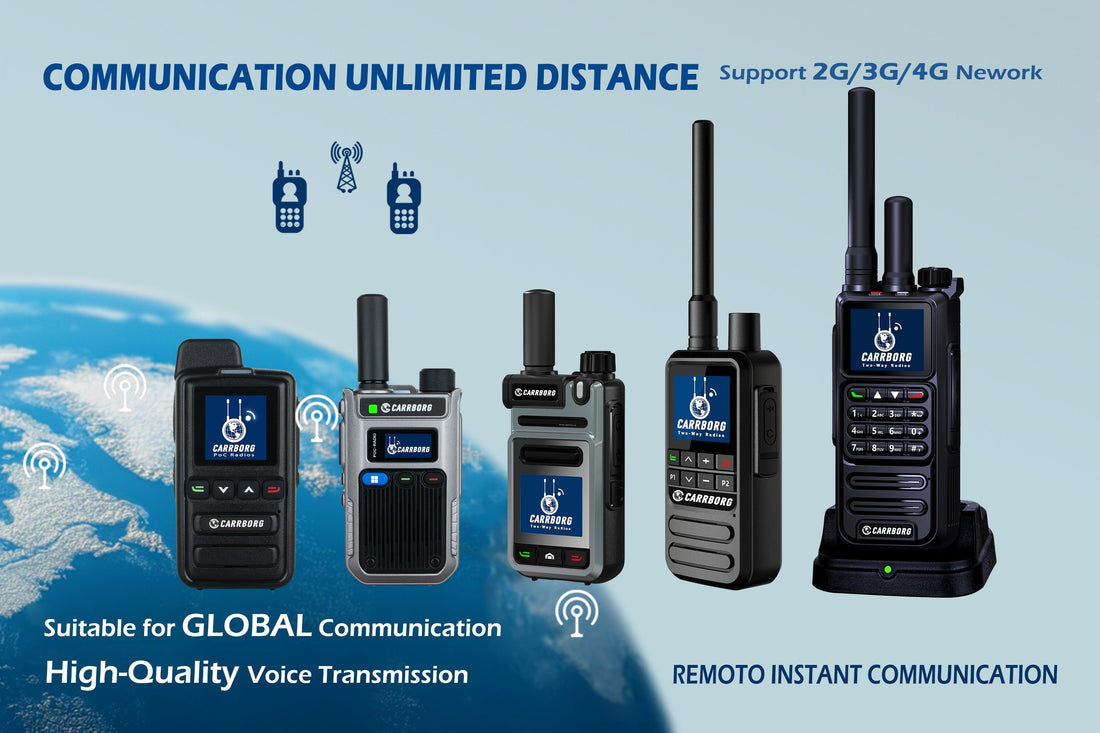
American Cellular Walkie-Talkie: Redefining the Boundary of Modern Communications
In the fast-paced modern society, efficient and reliable instant communication tools have become the core needs of business operations, public safety and even personal collaboration. Although traditional walkie-talkies have long occupied this field, their limited coverage, single functions and bulky equipment have gradually failed to meet the needs of the digital age. The emergence of **Cellular Push-to-Talk** (PoC), with the wide coverage and intelligent functions of cellular networks, is setting off a communication revolution in the United States.
---
### **1. Cellular Walkie-Talkie: When Traditional Walkie-Talkie Meets Cellular Network**
Cellular walkie-talkie, in short, is a new communication technology that combines the "one-button talk" function of traditional walkie-talkies with cellular mobile networks (4G/5G). Users can realize instant group calls across the country or even the world through smartphones or dedicated devices that support PoC, without relying on traditional repeaters or dedicated frequencies.
**Core advantages**:
1. **Unlimited coverage**: Relying on the cellular networks of the four major US operators (Verizon, AT&T, T-Mobile, Dish), the communication range is no longer limited to a few kilometers, but extends to the whole country and even across borders.
2. **Multi-function integration**: Supports voice, video, GPS positioning, picture transmission, and even linkage with Internet of Things (IoT) devices.
3. **Cost-effectiveness**: No need to build relay stations, on-demand subscription services, suitable for small and medium-sized enterprises and flexible teams.
---
### **II. US cellular walkie-talkie market: the explosion of technology and applications**
As a global leader in communication technology, the United States has a much faster rate of popularization of cellular walkie-talkies than other countries. According to ABI Research data, the size of the US cellular walkie-talkie market will exceed US$1.5 billion in 2023, with an annual growth rate of 12%, mainly driven by the following areas:
#### **1. Logistics and transportation industry**
From long-distance freight fleets to last-mile delivery, cellular walkie-talkies help drivers coordinate routes and report road conditions in real time. For example, UPS and Amazon's logistics teams have widely adopted **Motorola WAVE** and **Verizon Push-to-Talk** solutions to improve dispatch efficiency by 30%.
#### **2. Public safety and emergency response**
Fire, police and medical rescue departments need to collaborate across regions. Cellular walkie-talkies support priority calls, emergency alarms and GPS tracking functions, such as **AT&T Enhanced PTT**, which is used by multiple state governments for disaster emergency command systems.
#### **3. Construction and manufacturing**
On construction sites or in factories, workers can use dust-proof and waterproof dedicated equipment (such as **Sonim XP3**) to contact the team with one click, and simultaneously upload photos or videos of equipment failures to reduce downtime.
---
### **III. Technical standards and future trends**
The technical ecosystem of cellular walkie-talkies in the United States is based on **3GPP standards**, and mainstream solutions include:
- **PTT over Cellular (PoC)**: Low-latency calls based on VoLTE (4G voice) or VoNR (5G voice).
- **Mission-Critical PTT (MCPTT)**: An enhanced protocol designed for public safety that supports network redundancy and encrypted communications.
**Future trends**:
- **5G empowerment**: Ultra-low latency (1ms level) and large bandwidth will support AR/VR collaborative operations.
- **AI integration**: Voice command to text and intelligent scheduling algorithms will further improve efficiency.
- **Cross-platform compatibility**: Seamless integration with collaboration tools such as Slack and Microsoft Teams.
---
### **Fourth, how to choose a suitable cellular intercom solution? **
For the needs of American users, please refer to the following points:
1. **Network coverage**: Verizon and AT&T have wider coverage in rural areas, and T-Mobile is more cost-effective in urban areas.
2. **Device compatibility**: Do you need a three-proof (waterproof, drop-proof, dustproof) device? Or use a smartphone APP directly?
3. **Industry compliance**: Medical, energy and other fields must comply with FCC (Federal Communications Commission) and HIPAA regulations.
**Recommendations for popular service providers**:
- **Verizon Push-to-Talk Plus**: Suitable for national enterprises, supports iOS/Android.
- **Zello Work**: Lightweight APP solution, monthly fee as low as $5/user.
- **Motorola TLK Series**: Hardware terminal designed for extreme environments.
---
### **V. Challenges and Controversies**
Despite the broad prospects, cellular walkie-talkies still face some challenges:
- **Network dependence**: May not be available in cellular signal blind areas (such as remote mountainous areas).
- **Price controversy**: Unlimited call packages often have data restrictions, and enterprises need to choose carefully.
- **Privacy and security**: The encryption level must meet industry requirements to prevent communication content from being intercepted.
---
### **Conclusion: From "walkie-talkie" to "smart collaboration terminal"**
Cellular walkie-talkies are not only a technological upgrade, but also an innovation in the way of working. In the US, a market that relies heavily on efficiency and innovation, it is redefining the boundaries of teamwork - whether it is a logistics network across the east and west coasts or an emergency scene where every second counts, instant communication has never been so powerful and accessible.
In the future, with the integration of satellite communications (such as SpaceX Starlink) and 5G-Advanced, the coverage and capabilities of cellular walkie-talkies may break through imagination and become one of the core tools in the era of the Internet of Everything.
---
**Extended reading**:
- "How does 5G reshape industrial communications?"
- "The case of digital transformation in the US logistics industry"
- "Global Walkie-Talkie Market Report 2024"
I hope this blog can provide practical information for your readers! If further adjustments or additional details are required, please feel free to let me know.
